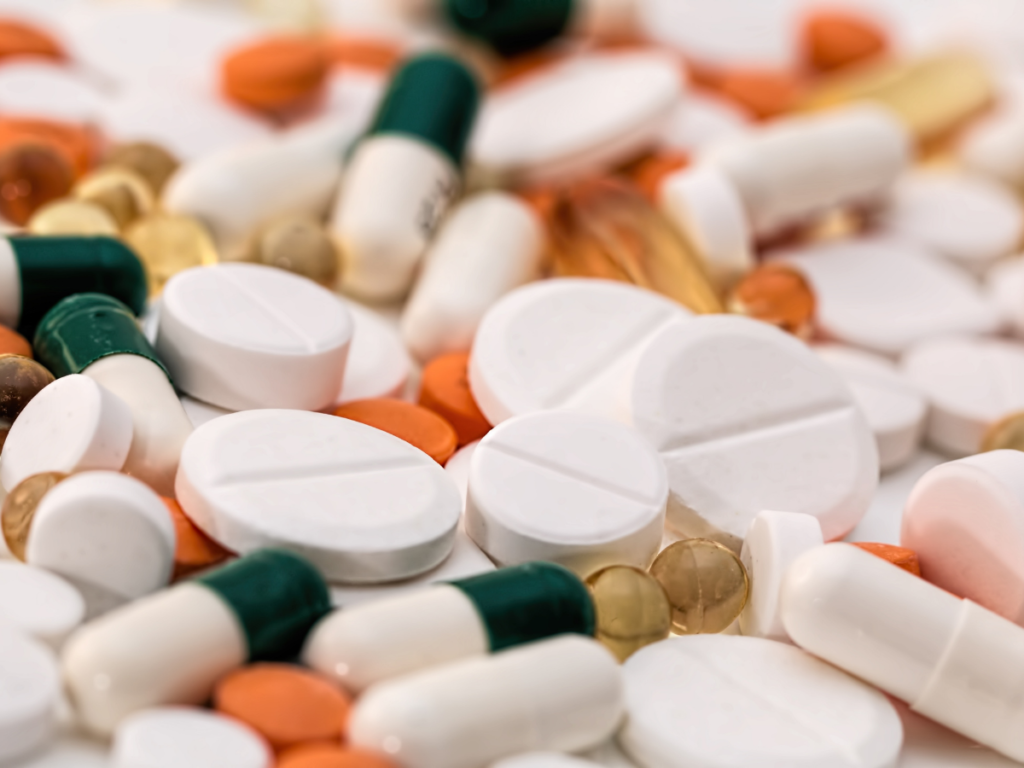What is Methadone Withdrawal?
Methadone is a medication used to treat Opioid Use Disorder (OUD). Methadone is a long-acting full opioid agonist, and a schedule II controlled medication. When misused, methadone withdrawal symptoms resemble those of other opioids and include nausea, sweating, and cravings. Methadone is a medication approved by the Food and Drug Administration (FDA) to treat OUD as medication-assisted treatment (MAT), as well as for pain management. When taken as prescribed, methadone is safe and effective. Methadone helps individuals achieve and sustain recovery and to reclaim active and meaningful lives.
Methadone is a synthetic opioid agonist that eliminates withdrawal symptoms and relieves drug cravings by acting on opioid receptors in the brain—the same receptors that other opioids such as heroin, morphine, and opioid pain medications activate. Although it occupies and activates these opioid receptors, it does so more slowly than other opioids and, in an opioid-dependent person, treatment doses do not produce euphoria. It has been used successfully for more than 40 years to treat opioid use disorder and must be dispensed through specialized opioid treatment programs. [1]
Although methadone is used to treat opioid addiction, it can be extremely physically addictive itself, especially when taken in high doses.
Although it may seem like you are trading one addiction for another, there are benefits for taking methadone over continuing misuse of other opioids, for example:
- Methadone does not cause impairment or permanent damage to the brain and body
- Because methadone is regulated it is not cut with other, unknown, substances
- Because methadone can be legally obtained through a methadone clinic, it does not require its users to engage in secretive, illegal, and self-destructive behavior
- Methadone is difficult to overdose on when taken as prescribed.

The length of time a person persists on methadone treatment depends on their situation. Some say that six months to a year is a good term for methadone maintenance. Others may stay on methadone indefinitely if it keeps them clean.
Uncomfortable methadone withdrawal symptoms can occur when methadone is stopped in people who have been taking the drug long-term. Although some people find the withdrawal from methadone takes longer than that of heroin or other opioids, others do not, and in the majority of cases, the methadone withdrawal symptoms are milder than that of other opiates and safer because it is usually undertaken under supervision. [2]
Common and Serious Side Effects of Methadone
Common side effects of methadone include:
- Restlessness
- Nausea or vomiting
- Slow breathing
- Itchy skin
- Heavy sweating
- Constipation
- Sexual problems
Serious side effects of methadone include:
Side effects should be taken seriously, as some of them may indicate an emergency. Patients should stop taking methadone and contact a doctor or emergency services right away.
- Experience difficulty breathing or shallow breathing
- Feel lightheaded or faint
- Experience hives or a rash; swelling of the face, lips, tongue, or throat
- Feel chest pain
- Experience a fast or pounding heartbeat
- Experience hallucinations or confusion
Methadone Withdrawal Symptoms
Initial methadone withdrawal symptoms include:
- Anxiety
- Difficulty sleeping
- Restlessness
- Runny nose
- Sweating
- Tiredness
- Watery eyes
- Yawning
Other symptoms that occur within the first week may include:
- Cramps
- Depression
- Diarrhea
- Drug cravings
- Goosebumps
- Low energy levels
- Muscle aches and pains
- Nausea or vomiting

Timeline and Symptoms of Withdrawal
Methadone is typically not prescribed for long-term use. Thus, many people who use methadone over an extended period of time may be abusing or addicted to the drug. The longer and more frequently a person uses methadone, the higher the risk he or she will experience the negative long-term consequences of the drug.
The length of time a person persists on methadone treatment depends on their situation. Some say that six months to a year is a good term for methadone maintenance. Others may stay on methadone indefinitely if it keeps them clean.
- The duration of methadone withdrawal symptoms varies from person to person but may last anywhere from two to three weeks to up to six months.
- It may take 24 to 36 hours for withdrawal symptoms to start when methadone is stopped.
- Initial withdrawal symptoms are usually mild and may include anxiety, restlessness, a runny nose, sweating, tiredness, and watery eyes.
- Other withdrawal symptoms such as drug cravings, muscle cramps, severe nausea or vomiting, diarrhea, and depression are likely to be at their worst over the first week.
How to Stop Methadone Withdrawal Symptoms
The best way to cope with methadone withdrawal symptoms is to avoid skipping doses or trying to quit abruptly. Even if you are frustrated and sick of going to a clinic or pharmacy every day for a supervised dose, it is best to avoid abrupt cessation. Instead, talk to your prescribing doctor about tapering.
Tapering methadone means gradually taking smaller doses over the course of several weeks or months. Although tapering is considered the best way of detoxing from methadone, it can still be challenging. You are likely to experience methadone withdrawal symptoms each time your dose is cut. Working closely with a doctor, you can extend your taper timeline and reduce your dose by smaller increments if necessary.
It is not unusual for people with opioid use disorders to go on and off methadone over the course of several months or years. Detoxing from methadone is a great step, but it doesn’t mean that you’ve beaten your addiction. Proper addiction treatment takes a multifaceted approach that combines medication management with psychotherapy and social support.
Remember that it is not uncommon for people to overdose and die during a relapse. Fortunately, there is a non-opioid medication available that can help reduce your risk.
Naltrexone is what’s known as an opioid antagonist (similar to the naloxone in Suboxone). Naltrexone binds to the opioid receptors and acts as a blockade, preventing other opioids from binding to those same receptors. This means that even if you relapse and use an opioid, you won’t get high (but you can overdose). Knowing that using an opioid won’t get you high should discourage you from impulsively relapsing. [3]

Treatment for Methadone Addiction
Other medications may interact with methadone and cause heart conditions. Even after the effects of methadone wear off, the medication’s active ingredients remain in the body for much longer. Unintentional drug overdose is possible if patients do not take methadone as prescribed.
The following tips can help achieve the best treatment results:
- Never use more than the amount prescribed, and always take at the times prescribed. If a dose is missed, or if it feels like it’s not working, do not take an extra dose of methadone
- Do not consume alcohol while taking methadone.
- Be careful driving or operating machinery on methadone.
- Call 911 if too much methadone is taken or if an overdose is suspected.
- Prevent children and pets from accidental Ingestion by storing it out of reach.
- Store methadone at room temperature and away from light.
- Do not shared your methadone with anyone even if they have similar symptoms or suffer from the same condition.
- Dispose of unused methadone safely. Talk to your MAT practitioner for guidance. [4]
While Methadone is used as a way to curb addiction and reduce cravings, it is a heavily-regulated drug. It is so regulated that patients who have been prescribed Methadone in an outpatient setting have to go to a clinic every day to be administered their dose. It is a powerful Opiate with potentially addictive qualities. People who start using Methadone to overcome their Heroin addiction are at a higher risk of abuse because they already have a history of Opioid dependency. Some addicts, in fact, prefer Methadone as their substance of choice. Any time someone uses more Methadone than they are prescribed, or uses it without a prescription, they are abusing the medication.
Methadone does not create the same euphoric effects as Heroin or Morphine because it is designed to do the opposite; the drug is formulated to block the pleasurable sensations of other Opiates. For example, suppose an individual who is being treated with Methadone attempts to get high by using Heroin. In that case, Methadone will block the euphoric effects of Heroin (and of all other Opioids). However, Methadone does have some euphoric effects. They are limited; however, they are also great enough that the National Highway Traffic Safety Administration has indicated that Methadone users aren’t “fit to drive” due to the side effects of Methadone.
Methadone withdrawal symptoms can be difficult to overcome alone. Fortunately, you don’t have to do it alone. If you’ve tried to quit in the past but ended up using methadone again, that’s a clear sign you need professional help. Our team at We Level Up TX specializes in creating an ideal environment and providing effective therapies for substance use disorder and withdrawal management.
If you or someone you love is struggling with substance use disorder, contact us today here at We Level Up TX.
Source:
[1] How do medications to treat opioid use disorder work? – National Institute on Drug Abuse
[2] How long does methadone withdrawal last? – https://www.drugs.com/medical-answers/long-methadone-withdrawal-3543797/
[3] How Long Does Withdrawal From Methadone Last? – https://www.verywellmind.com/methadone-withdrawal-4178352
[4] Methadone – Substance Abuse and Mental Health Service Administration